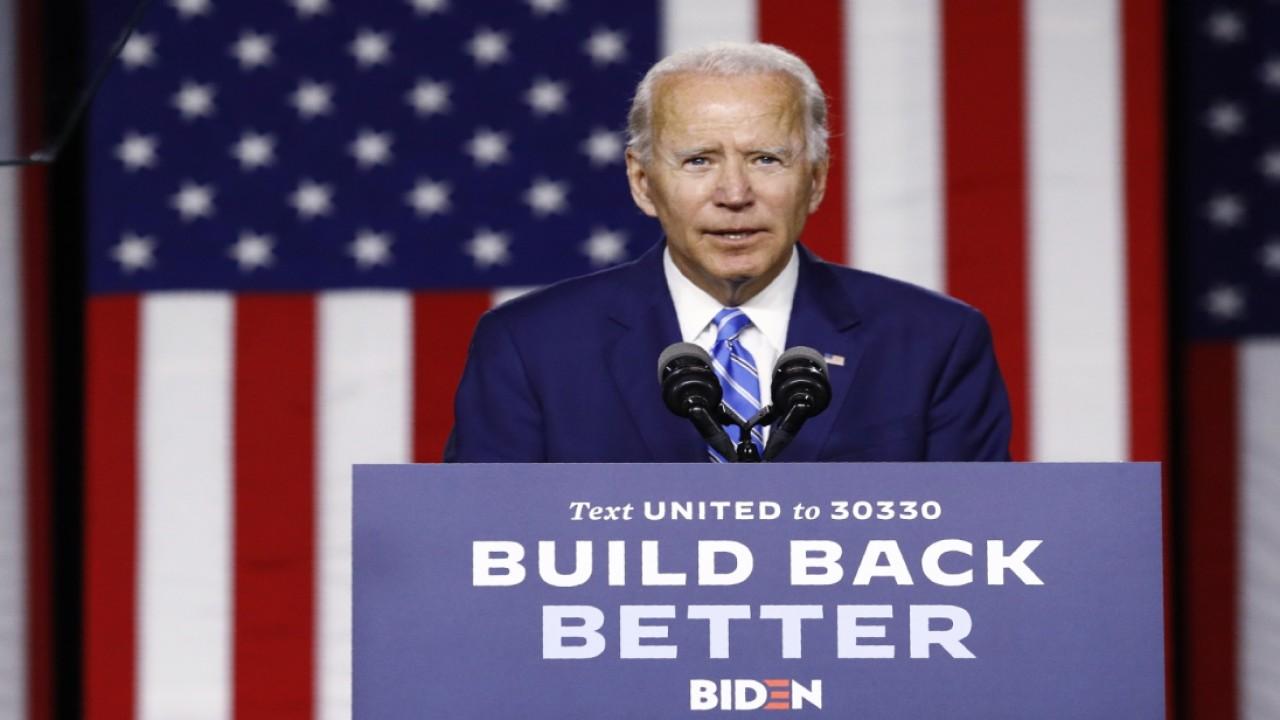How Biden-Harris Energy Plan would inflict California-style Blackouts, sky-high costs on America
U.S. Energy Secretary Dan Brouillette discusses California’s energy policies, energy security in America, jobs in the fracking industry, and potential green energy sources.
California just saw electrical blackouts due to a lack of power, rather than due to wildfires, for the first time since 2001. The left’s systemic environmentalism that emphasizes green bling over the basics, like reliability and power lines, is to blame.
California’s woes would have been far worse were it not for gas and coal-powered generation in other Western states exporting their power to bail out the Golden State.
But what would happen if California’s energy policies were imposed on the entire nation, as is planned under former Vice President Joe Biden and Sen. Kamala Harris’ proposed program?
Without the widespread availability of reliable gas and coal generation to back up unreliable wind and solar, America would be faced with constant blackouts during the hot summers.
Former U.S. Energy Secretary Rick Perry provides insight into Joe Biden’s $2 trillion climate change plan, Trump-backed candidates Tommy Tuberville and Ronny Jackson winning big in primary races and whether Texas will turn blue in 2020.
Power during the winter? Forget about it. There’s not enough sunlight and wind in the northern states to keep the lights on during the winter, much less power industry.
The only way Biden’s California energy plan would work would be to overbuild solar and wind, covering the nation with hundreds of thousands of acres of massive wind turbines and solar panels and then back it up with hundreds of millions of pounds of lithium-ion batteries costing trillions of dollars.
This is because electricity must be generated the instant it is consumed. Wind and solar power are not what’s known in the power business as “dispatchable.” It can’t be relied on when it's needed. That’s what happened in California in mid-August.
California generates about 33% of its electricity from renewable sources now. The reason California doesn’t have blackouts almost every day is that it is also America’s largest importer of electricity, drawing in massive amounts of power from the 13 states, Canada and Mexico that are part of what’s known as the Western Interconnection.
In 2018, about one-third of the retail electricity California used was imported from other states, including coal, gas, and nuclear power.
But California’s laws are cannibalizing the West’s reliable power sources. It works like this: California’s subsidized and mandated renewable energy has led to the state frequently exporting solar power at very low prices. This, along with other California policies, have driven neighboring states’ reliable fossil fuel plants out of business. This has worked fine, for a time, as there was excess capacity to make up for California’s unreliable generation.
But now California’s policies are hitting the limits of physics. By 2030, California will be required by law to generate 60% of its electricity from non-carbon sources—new nuclear power is out of the question as California law prohibits it.
By 2045, the mandate moves to 100%. So far, California lawmakers have been able to avoid the wrath of the voting public with electrical prices only being 61% above the national average and blackouts, until a few weeks ago, rare.
But as the requirement for renewable power pushes higher, something will have to give. Californians will see far more blackouts, far higher electrical prices, or both. This is because it will be impossible for the rest of the West to save California from itself. Without $300 billion invested in battery storage—for only 24 hours of storage—and billions more for upgraded powerlines, the lights—and air conditioning—will go out in California.
This, of course, is the huge, unspoken challenge of the Biden-Harris energy plan, which aims to do the nation what California has done to itself. Only, without other states to bail out California, these virtue-signaling environmental plans will result in nationwide power shortages or a $4.5 trillion price tag for a day’s worth of battery storage. There’s no way around it.
One other aspect of Biden’s Green New Deal-light plan that isn’t getting enough attention is nationwide high-speed rail.
Here again, California offers the nation a cautionary tale with its high-speed rail project, narrowly approved by voters in 2008, in serious jeopardy of never being completed.
Initially promoted as a 380-mile Los Angeles-to-San Francisco route, costs ballooned from $33.6 billion to $98.1 billion.
Further, the project was billed as needing no new taxes—this turned out to be untrue—and that it would be so compelling it would attract billions in private investment. So far, not a nickel in private money has made its way into the effort which has now been ignominiously shortened to a 171-mile Bakersfield-to-Merced run serving California’s relatively sparsely populated main agriculture region.
This raises a very pertinent question for American voters: if California can’t get renewable power or high-speed rail right, how can Biden and Harris make it work for the entire nation?







.jpeg)
Comments
Post a Comment